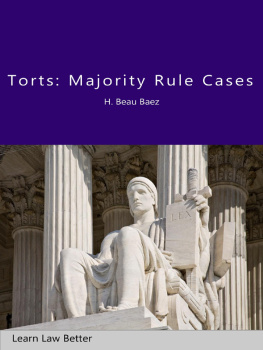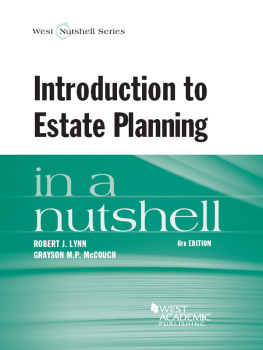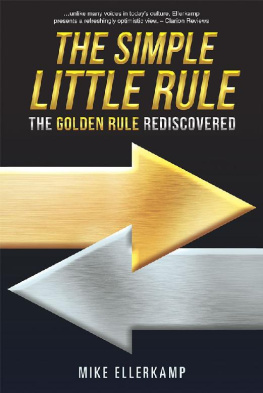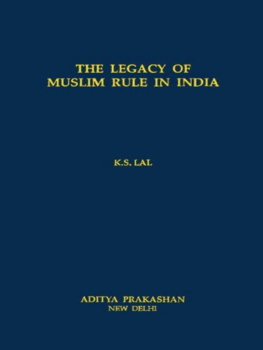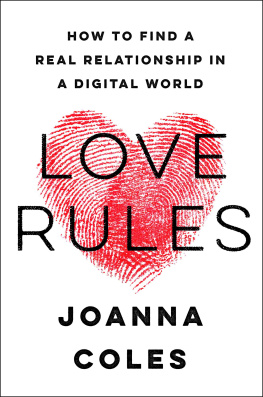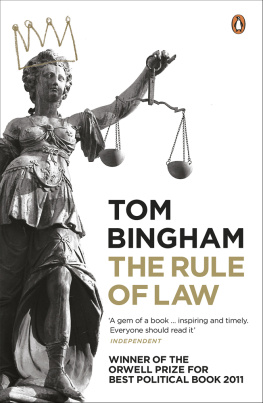West Academic Publishings Emeritus Advisory Board
Jesse H. Choper
Professor of Law and Dean Emeritus
University of California, Berkeley
Yale Kamisar
Professor of Law Emeritus, University of San Diego
Professor of Law Emeritus, University of Michigan
Mary Kay Kane
Late Professor of Law, Chancellor and Dean Emeritus
University of California, Hastings College of the Law
Larry D. Kramer
President, William and Flora Hewlett Foundation
James J. White
Robert A. Sullivan Emeritus Professor of Law
University of Michigan
West Academic Publishings Law School Advisory Board
Joshua Dressler
Distinguished University Professor Emeritus
Michael E. Moritz College of Law, The Ohio State University
Meredith J. Duncan
Professor of Law
University of Houston Law Center
Rene McDonald Hutchins
Dean and Joseph L. Rauh, Jr. Chair of Public Interest Law
University of the District of Columbia David A. Clarke School of Law
Renee Knake Jefferson
Joanne and Larry Doherty Chair in Legal Ethics &
Professor of Law, University of Houston Law Center
Orin S. Kerr
Professor of Law
University of California, Berkeley
Jonathan R. Macey
Professor of Law,
Yale Law School
Deborah Jones Merritt
Distinguished University Professor,
John Deaver Drinko/Baker & Hostetler Chair in Law
Michael E. Moritz College of Law, The Ohio State University
Arthur R. Miller
University Professor and Chief Justice Warren E. Burger Professor of
Constitutional Law and the Courts, New York University
Grant S. Nelson
Professor of Law Emeritus, Pepperdine University
Professor of Law Emeritus, University of California, Los Angeles
A. Benjamin Spencer
Dean & Chancellor Professor of Law
William & Mary Law School

The Rule
The Little Book on Perpetuities
Second Edition
Donald H. Gjerdingen
Professor of Law
Indiana University Maurer School of Law
A SHORT & HAPPY GUIDE SERIES

The publisher is not engaged in rendering legal or other professional advice, and this publication is not a substitute for the advice of an attorney. If you require legal or other expert advice, you should seek the services of a competent attorney or other professional.
a short & happy guide series is a trademark registered in the U.S. Patent and Trademark Office.
2017 LEG, Inc. d/b/a West Academic
2021 LEG, Inc. d/b/a West Academic
444 Cedar Street, Suite 700
St. Paul, MN 55101
1-877-888-1330
Printed in the United States of America
ISBN: 978-1-64708-514-8
iii
To Kendra, Erick, and Kari, and to Eloise, Anette, and Lenamy beautiful lives in being.
v
Acknowledgments
Im grateful to my colleague, Jeff Stake, for his comments and his enthusiasm for the subject. And to Ms. Mary Beth Boyer and Ms. Cassie Fitzwater for their careful work on the manuscript.
My thanks to Elizabeth Eisenhart, an editor who, when asked, What about the Rule against Perpetuities? did what so many generations of law students and lawyers have doneshe laughed.
Bloomington, Indiana
June 2021
vii
The Common-Law Rule Against Perpetuities
No interest is good unless it must vest, if at all, not later than twenty-one years after some life in being at the creation of the interest.
John Chipman Gray, The Rule Against Perpetuities
201, at 191 (4th ed. 1942)
ix
Table of Contents
x
C. Why This Rule Is Different
G. The Famous Common-Law Rule of John Chipman
Gray
L. Recent Repeal of the Rule & the Return of the Fee
Tail
D. A Possible Carveout for Families in a Fee Simple
World?
The Legal Setting of the RuleFuture
Interests, Conditions, & Contingent Title
B. The Hypothetical Fate of Families in a Fee-Simple
Only World
C. Families & Future InterestsLife Estate & Remainder
as Example
F. Conditions & the Central Problem of Contingent
Title
xi
Chapter 7
A. The Legal Road Not TakenVisible Inconvenience as
a Standard (vs. a Rule)
D. Ways of ThinkingLooking Forward Using
Hypotheticals
xii
Part 4 The Common-Law Rule
of John Chipman Gray
What Types of Contingencies Usually Are
Involved?
The Cold Heart of Grays RuleTwo Options
& Some Rules of Thumb
E. Proving the Validating SideNaming a Validating
Life
F. Proving the Invalidating Sidethe Perpetuities
Storyline
xiii
Logical Proof & However Remote
Some Common Cases & Some Classic
Traps
Will or Revocable TrustGifts to
Grandchildren
To the Grandchildren of a Person Now Alive
[Three Generations]
Irrevocable Trust vs. Revocable Trust or Will
[Three Generations]
Fertile Octogenarian [Three Generation
Variant]
Administrative Contingency [No Named
Persons]
Another Final AnswerInvalidDo the Proof
Tell the Invalidating Story
xiv
Chapter 14
Applying the RuleGeneral Testamentary Powers
& Special Powers
Applying the Rule to Class GiftsAll-or
Nothing
Rule Against Suspension of the Power of
Alienation
An InterludePersonalitiesBarton
Leach
Reforms GenerallyReformation & Wait
and-See
xv
B. Major ReformReformation
Wait-and-SeeClassic Cases & OthersFlipping
the Odds
Invalidating Side of USRAP90-Year Wait-and
See
B. Restatement (Third) of PropertyTwo Full
Generations
What Life in Being plus 21 Years Did to
Families
Problems with Those Extra 21 YearsEquity
Within the Same Generation
Problems with Those Extra 21 Years
Complications for Drafting
xvi
Problems with Those Extra 21 YearsDonative
Gifts & Families
Generations-Based PerpetuitiesAnother
Option
C. The Demise of Formalisma New Age for Wills &
Trusts as Well as Perpetuities
Congress, Taxes, & Abolition of the Rule
the Humpty-Dumpty World of Modern
Perpetuities
The Mitigating Role of Trusts & Personal
Property
xvii
D. Policy # 3Property Reboots & Practical Problems of Trusts
i
A Short & Happy Guide to
The Rule
The Little Book on Perpetuities
Second Edition

Introduction
[L]et us not forget the bedeviled law student.
Barton Leach, Perpetuities in a Nutshell ,
51 Harv. L. Rev. 638, 638 (1938)
A.Law Students & the Rule Against Perpetuities
The Rule against Perpetuities is about grand fortunes and power, intrigue, politics, and lasting fame. Its also about big questions of property, families, and markets.
Why, then, do so many law students dread the Rule against Perpetuities? And how, too, did all this fun get lost in law school?
The problem is not with the students or the Rule, but how the story is told. Once dissected, the Rule is hardly as long-fanged as so many legal memories make it out to be.
B.Why We Study the Rule
Why do we study the Rule? In all, there are two good reasons. First, the Rule raises a wonderful policy question for the law: how far into the future may one generation control property? In one way or another, every generation must answer it. For the last 350 years, the answer has been the Rule against Perpetuities.


